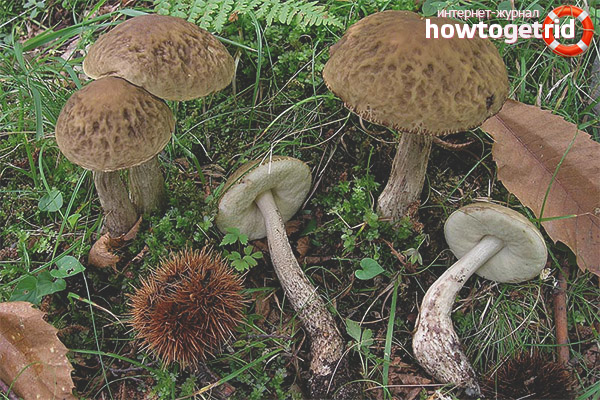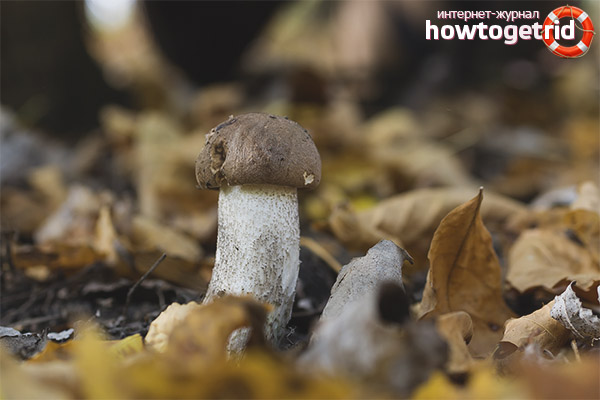The content of the article
The hornbeam is named after the hornbeam tree, near which it most often grows. But he also has other names - gray or elm brown boletus, gray chamomile. This mushroom is so similar to boletus, mushroom pickers may not always distinguish them.
Appearance characteristic
The hornbeam belongs to the flying family. His family is a wise woman.
In young mushrooms, the shape of the hat is hemispherical, with tucked edges. At a more advanced age, the hat takes a pillow-shaped form. The surface wrinkles a little, has irregularities. The porous layer is up to 3 cm. The skin is dull and dry, but if it rains, it immediately becomes shiny, looks watery. Therefore, in comparison with the boletus, it loses due to the not so high-quality density of the cap. If the mushroom is overripe, the skin completely shrinks, and then the flesh of the cap and the tubules are visible under it.
The flesh of a young specimen is usually white and soft. But the older generation of hornbeam gains rigidity with age, which differs significantly from boletus. When the fungus is cut, it darkens to a pink-purple color, and then becomes dark gray. But the aroma and taste of the mushroom are pleasant.
The color of the legs is grayish, but below it changes to brownish. It has a cylindrical shape, which becomes thicker closer to the ground. The pulp in it is fibrous. Leg thickness - on average 4 cm, height - from 5 to 13 cm. The porous layer is free. It has a small indentation located at the foot.
The spore form is fusiform, and the spore powder has a brown tint. The pores are very small with an angular-round shape, their surface is white or sand. The tubes are narrow, have a soft consistency with a watery structure.
Where can I find a hornbeam
Of course, where hornbeams grow, you can find a hornbeam. But since these trees belong to the birch genus, gray birch barks are often found in birch groves. These mushrooms also grow near other deciduous trees, for example, it can be hazel and poplar.
The most common habitats are the northern zones of Russia and Asia, the Caucasus. You can collect the hornbeam in June, and its collection ends in October.
Hrabovik as a food product
This mushroom is ranked as edible, and in taste is very reminiscent of boletus. But due to the fact that its flesh is less dense, it cannot be stored for a long time, it spoils quickly.
These mushrooms are especially fond of worms, so many can not be eaten because they are corroded. After collection, you should carefully sort them out at home and leave only fresh and healthy. If some parts are darker in color, then this may be evidence of decay, which is dangerous not only for health but also for life.
The hornbeam is used fresh to fry and cook, dried, soaked in vinegar and salt, pickled. For the preparation of various dishes using recipes that are applicable to boletus.
Similar mushrooms
The hornbeam has a similarity (and a very large one) with both some edible mushrooms and those dangerous to humans.
The bile fungus is also a double of the hornbeam, but this is its "antipode", since it is considered almost poisonous. It is not suitable for food, because it has a bitter taste. Even if you try to get the bitterness out of him, nothing will work out, it will only intensify. Such mushrooms most often grow in forests with coniferous vegetation, as well as on sandy soils. Their existence is from July to October. The hat is convex, the average diameter of 10 cm. In the bile fungus, the surface of the hat is smooth and dry. The color is brown or brown. The pulp is white, thick. When it is cut, it acquires a pink hue. It has no smell, but you should not try it: it is very bitter. The leg can have a length of up to 7 cm, a width of 1 to 3 cm. It differs in that it is swollen and dark brown or creamy ocher, a mesh pattern is visible.
Video: Hornbeam (Leccinum carpini)











Submit